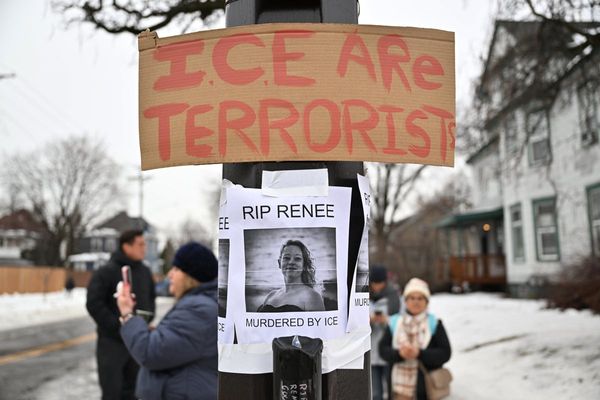
School refusal is on the rise, teenagers are dropping out at record rates and public schools are continuing to lose out on funding.
The Productivity Commission’s latest report on education services, released Monday night, is grim reading for the sector, as governments grapple to close disadvantage gaps across the nation.
Here are the five main takeaways.
Private school funding is outpacing the public system
Government funding to private schools has increased by 15% in a year – and is vastly outpacing funding to public schools – despite Labor’s commitment to close continued equity gaps in education.
Non-government schools received $19.9bn in 2021-22, a $2.6bn increase from 2020-21 equating to a 15% annual jump. Meanwhile government schools received $58.7bn, a $3.8bn increase from the previous year and just 7% more funding overall.
It continues a long-term trend of private school funding increasing at almost twice the rate of that of the public system. This despite government schools educating the majority of Aboriginal and Torres Strait Islander students, students from poor backgrounds, students with disabilities and geographically remote students.
The data shows public school funding increased by 20.3% (or 2% a year) in real terms between 2012 and 2022, while private school funding from governments increased by 37% over the same period.
The Australian Education Union’s federal president, Correna Haythorpe, says only 1.3% of public schools were funded at the bare minimum agreed to by governments, compared with 98% of private schools – driving inequality in outcomes.
“We don’t have a level playing field in education where every child gets the full support they need to succeed,” she says.
One in two Indigenous teens failed to finish year 12
Indigenous student dropout rates are more than double that of non-Indigenous students, the latest data shows, while First Nations students are also disproportionately represented in the public system.
Just under half of all Indigenous students (43.6%) who were full-time in year 10 failed to continue through to year 12, compared with 20% of non-Indigenous students.
At the same time, the average attendance rate for non-Indigenous students was greater than for First Nations students across all year levels in all parts of the country, with gaps widening at higher year levels.
More than two in 10 Indigenous students between year one and 10 were failing to regularly attend school, rising to around half of Aboriginal and Torres Strait Islander students in very remote areas. It equates to a 12% attendance gap between Indigenous and non-Indigenous students.
Nationally, Aboriginal and Torres Strait Islander young people represented 8.1% of government school students, compared with just 3.1% of private school students.
Gap between regions and cities widens
The latest data shows a strong correlation between where a student lives and their family background with their attendance and graduation rates, engagement and performance at school.
While 89.6% of students regularly attended school in major cities from year one to 10, the rates fell to 81.1% in remote areas and 66.1% in very remote areas – including just 51.8% in very remote areas of the Northern Territory.
Similarly, the report showed graduation rates were highest for states and territories with large urban centres including the Australian Capital Territory, Victoria and South Australia, while they lagged in Tasmania and the NT. While 82% of students in major cities across the nation attained their year 12 certificate, the rate dropped to 73% of students in remote areas and just over half (51%) of students in very remote areas.
Retention rates at a record low
Students are failing to stay in school to the end of year 12 at a 10-year-high, with almost one in five (21%) not completing their full 13 years of education.
The retention rate is vastly higher for non-government schools (87.2%) compared to government schools (73.5%) – where almost one in three dropped out before the end of year 12.
The one caveat to retention rates is they are only able to determine the total number of students in each year level, not the individual trajectory of school-leavers. Students may have chosen to repeat a year, intend to return after a period of absence or have moved between school sectors or states and territories.
Nationally, the retention rate was lowest in the Northern Territory (62.6%) and Tasmania (71.7%), and the highest rate was in the ACT (87.8%).
Half of high school students skipped classes last year
Just over half of all high students skipped school at least 10% of school days (51.1%), the latest data shows, significantly higher than in 2015 (31.5%).
Attendance was worse among Aboriginal and Torres Strait Islander students, with just two in 10 (24.1%) attending high school more than 90% of the time.
The growing issue of school refusal led to a Senate inquiry initiated by the Greens which last year found there was a serious lack of data as to why students were increasingly turning away from education.
Overall, the attendance rate, which refers to the percentage of possible student days attended, was 88.6% in 2023, four percentage points lower than in 2015 (92.6%).







